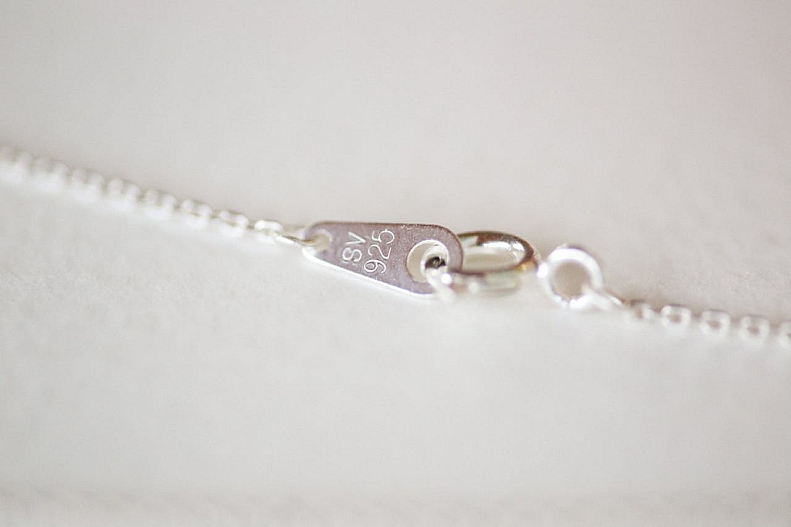
Different Types of Silver Jewellery You Must Know About
Silver in its purest state is too soft to be used in jewellery-making because it is easily damaged or changes shape. As a result, it is mixed with other metals to increase its hardness and durability. You may also come across alloys that appear like silver but are made of different metals entirely since the colour of silver is highly valued.
Although you may believe that there is only one type of silver used in jewellery, there are several types. If you're in the study stage of your silver jewellery journey, you might wonder, What is the best quality silver? Does the metal tarnish? And how to compare the different kinds of silver used in jewellery-making? But don't worry! We are here to help you to make an informed decision about your next silver purchase.
We'll explain the different properties of the most well-known varieties of silver used in jewellery-making.
6 Different Types of Silver Jewellery You Must Know About
1. Fine .999 Silver
Fine silver is the most comparable substance to pure silver. The designation .999 denotes 99.9% pure. The leftover 0.1% is made up of trace elements in insignificant amounts. Fine silver looks duller than sterling silver, which significantly has a bright polish. It is soft and readily scratches, dents, and changes shape.
Fine silver jewellery is less prevalent than sterling silver jewellery since the pieces do not last as long in time. However, fine silver has the advantage of being simple to form and highly resistant to tarnish. Because it is a soft metal, it is best used to shop for personal jewellery, earrings, or necklaces rather than bands or bracelets, which are more prone to wear.
2. Argentium Silver
Argentium Silver contains both germanium and copper. It is purer than sterling silver and can be either 93.2% or 96% pure. Because of this, it has been a modern and extremely valuable silver alloy; Argentium is progressively displacing sterling silver as the most preferred silver alloy. Even though this alloy includes less copper, adding germanium makes it harder, more durable, simpler to maintain, and even more tarnishing-resistant.
Argentium is considerably more expensive than sterling silver because it is a trademarked alloy and not widely available to jewellers. If available, it comes with a seal of Argentium stamp (a flying unicorn) to demonstrate that it is genuine Argentium silver.
3. Coin Silver
In the United States, coin silver was once a commonly used alloy, but it has become increasingly rare, leading to confusion. The technical definition of "coin silver" is an alloy composed of 90% silver and 10% copper. This name arose because metalworkers often used melted-down scrap coins to create items.
However, coins now contain fewer precious metals, and instead, more inexpensive base metals are used. While some collectable coins or investment instruments have a higher silver content, coin silver jewellery available today is typically stamped with a .900 quality mark.
4. Sterling Silver

Sterling silver has a long past, having been used for coin minting and ornamental items for over a thousand years. Sterling silver, traditionally made of 92.5% pure silver and 7.5% copper, is harder and less expensive than purer silver metals.
The most common variety of silver used in jewellery making is sterling silver. Although this type is glossy and gorgeous, it is still slightly less bright than fine silver. Because of its greater copper content, sterling silver is more likely to tarnish in a shorter period. Tarnish can be avoided by frequently polishing the surface of your sterling silver jewellery with a soft cloth and keeping it away from moisture. Like the fine one, sterling silver is a hypoallergenic alloy.
5. Nickel Silver
Nickel silver, frequently found in costume jewellery, is not truly silver. The term "silver" used here just describes the material's silver-like colour and has nothing to do with the metals that make up its composition. Although most people mistakenly believe nickel silver to be an alloy of silver, it comprises 60% copper, 20% nickel, and 20% zinc. Even though it can resemble sterling silver in appearance that is glossy and stunning, it's still a nickel alloy.
Nickel silver is simple and may be formed into complex shapes. If you are susceptible to metal allergies, you should avoid it because it is not hypoallergenic. Many additional names are also used for marketing this alloy, like German Silver, Alpaca Silver, or Argentan, which can be deceiving.
6. Tibetan Tribal Silver
A variety of Tibetan silver known as "tribal" contains various base metal alloys. There are many different alloy compositions, and many of them lack silver. Some come from faraway places and contain dangerous metals, like lead.
Jewellers from bracelet shops purchase tribal components more for the design value than the metal because tribal parts can be rather lovely. However, it should always be carefully purchased and kept away from small kids.
Silver is considered to be a cool-toned metal. It is a timeless and versatile metal used in jewellery for centuries and remains popular today. But not all types of jewellery are the same. There are different varieties of silver, which are known as grades. Each grade of silver is different in composition, price, colour, and durability.
It's important to know the type of silver jewellery you're buying to know if its quality is worth its price. We hope this article will help you determine the types next time you shop for silver jewellery. Make sure to ask as many questions while purchasing and have a look for quality stamps.










COMMENTS
Thank you for this informative article! Understanding the different types of silver used in jewelry-making is essential for making informed purchases. It's fascinating to learn about the various alloys and their unique properties. This knowledge will undoubtedly help women make choices that align with their preferences and needs. Kudos for shedding light on this important aspect of jewelry shopping!